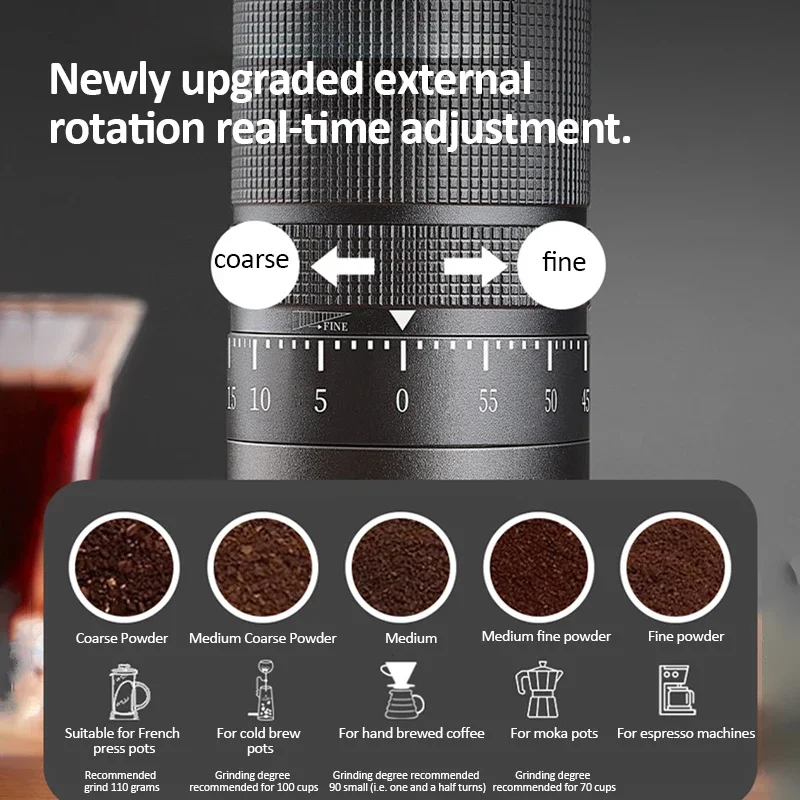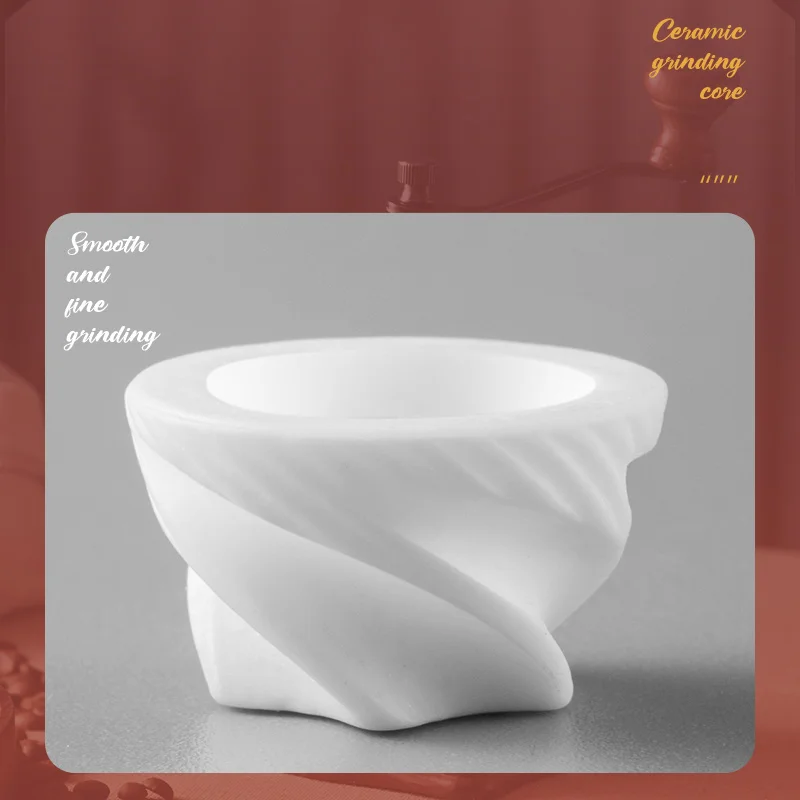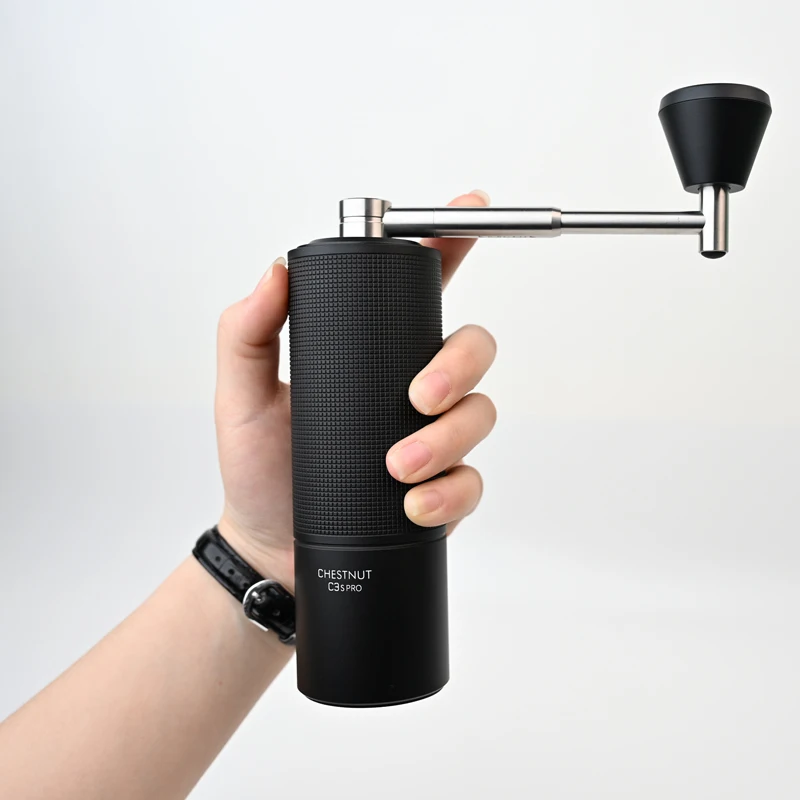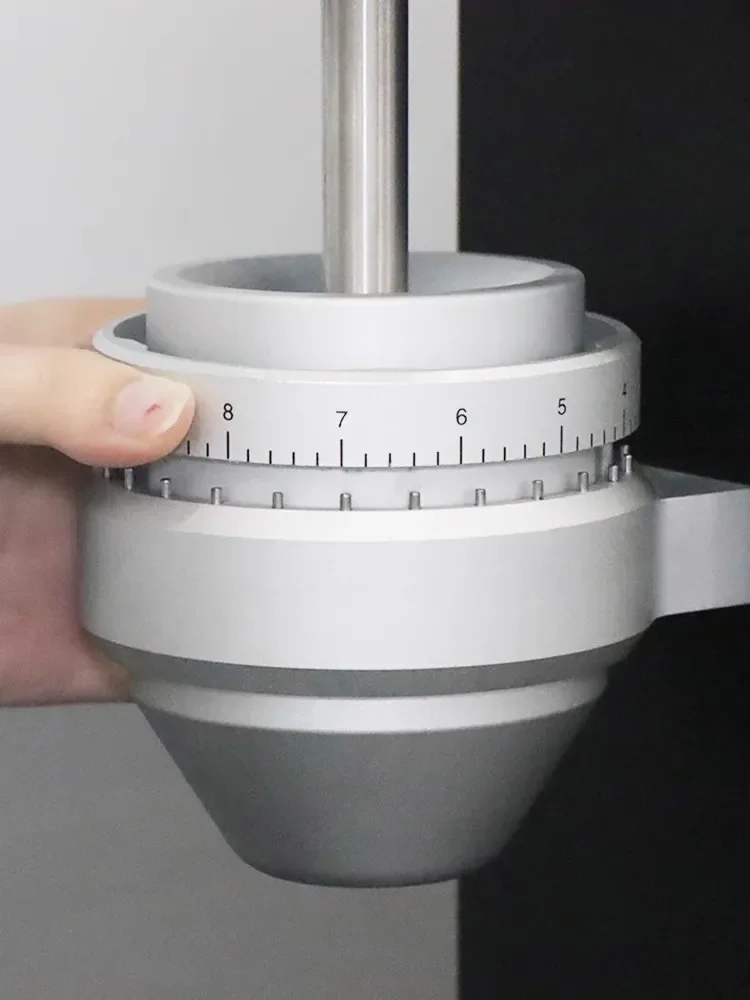Introduction: The Burr Grinder Popularity Paradox
Burr grinders have become the darling of the coffee world, praised by enthusiasts for their ability to produce consistently sized coffee particles. These grinders, available in both manual hand-crank versions and electric models, use two abrasive surfaces (burrs) that grind coffee beans between them rather than chopping them with blades. While they deliver superior grind consistency that leads to better extraction and enhanced flavor profiles, they aren’t without their shortcomings.
Despite their growing popularity, burr grinders come with trade-offs that deserve honest examination. For many coffee drinkers, especially those new to specialty coffee, the question remains: are the benefits worth the drawbacks? Understanding both sides helps you make choices aligned with your coffee priorities, budget constraints, and daily habits.
Many coffee lovers find themselves comparing burr and blade grinders as they consider upgrading their coffee setup, but the significantly higher price point ($40-500+ for burr grinders versus $15-30 for blade grinders) represents just the first of several potential disadvantages.
In this article, we’ll explore the full spectrum of burr grinder limitations—from cost and physical constraints to maintenance requirements and technical considerations—providing a balanced perspective on these popular coffee tools.
1. Higher Purchase Cost: The Price of Precision
The most immediate disadvantage of burr grinders is their significantly higher price point compared to simpler grinding methods. This price premium represents a substantial barrier for many casual coffee drinkers.
Price ranges typically fall into these categories:
- Manual burr grinders: $30-200
- Electric burr grinders: $100-1000+
- Blade grinders: $15-30
The substantial cost difference stems from several factors. Quality burr grinders require precision-engineered components, durable materials like hardened steel or ceramic for the burrs, and in electric models, motors powerful enough to maintain consistent speed under load. The manufacturing tolerances needed for effective burr grinders simply cost more to produce than the simple blade mechanisms.
For occasional coffee drinkers who consume standard grocery store beans, this investment may be difficult to justify. The long-term value equation depends largely on how much you prioritize flavor nuances in your coffee and how frequently you brew. Someone making one cup every few days might never recoup the additional cost through improved taste, while a multiple-cups-per-day enthusiast brewing specialty beans might consider it essential.
When comparing burr grinders to blade grinders, the cost difference represents the most immediate and obvious disadvantage, prompting many to question whether the improvement in grind consistency merits the premium price.
2. Physical Limitations: Size, Weight, and Portability Concerns
Electric burr grinders typically demand significant counter space with footprints averaging 5-8 inches wide and 10-15 inches tall. This size requirement can be problematic in smaller kitchens where counter space is already at a premium. By comparison, blade grinders often have a much smaller footprint, similar to a standard electric kettle.
Weight presents another consideration, with quality electric burr grinders often weighing between 5-15 pounds. This heft makes them difficult to move for cleaning or storage. While the weight typically indicates better construction with more metal components (which reduces static and improves stability during grinding), it creates practical challenges for daily use and storage.
Many households find themselves needing to permanently dedicate counter space to these appliances rather than storing them in cabinets due to their weight and size. For those with limited kitchen space, this represents a significant disadvantage.
Manual grinders offer better portability than their electric counterparts, but even premium metal coffee grinders designed for travel present trade-offs between durability and weight. While some excellent all-metal hand grinders provide travel-friendly options, they still require dedicated space in luggage or camping gear that blade grinders or pre-ground coffee don’t require.
These physical limitations matter most to coffee lovers with limited kitchen space or those who frequently travel and want to maintain their coffee quality on the go.
3. Noise Level: The Morning Disruption Factor
Electric burr grinders are notoriously loud. The noise comes from several sources: the motor, the mechanical interaction between the burrs, and the beans being crushed. This cacophony can easily reach 70-85 decibels—similar to a vacuum cleaner or busy traffic.
This noise level creates practical problems in many households, particularly in the morning when others may still be sleeping. The typical grinding time of 20-40 seconds can feel excruciatingly long when the machine is running at full volume. While blade grinders are certainly not quiet, many operate at somewhat lower decibel levels due to their simpler motors and mechanisms.
Noise considerations become especially important in:
– Apartments with thin walls
– Homes with sleeping children
– Early morning brewing scenarios
– Open office environments
Higher-end electric models sometimes feature quieter operation through sound insulation or improved motors, but this advantage typically comes with an even higher price tag. For those seeking quieter alternatives, manual coffee burr grinders offer a solution by eliminating the electric motor noise, though they require physical effort and more time to operate.
4. Cleaning and Maintenance Demands

Burr grinders require regular, thorough cleaning to maintain optimal performance—a task that’s considerably more involved than cleaning simpler grinders. Coffee oils build up on the burrs and in the grinding chamber, eventually becoming rancid and tainting the flavor of freshly ground coffee.
The cleaning process typically involves:
- Disassembling the grinder (sometimes requiring tools)
- Removing trapped coffee particles from burrs and chambers
- Cleaning oil buildup from grinding surfaces
- Careful reassembly to maintain calibration
- Periodic deep cleaning with specialized cleaning products
This maintenance isn’t merely optional—neglected burr grinders develop flavor problems, reduced grinding efficiency, and potentially even mechanical issues over time. The typical recommendation is a basic cleaning every 1-2 weeks for regular home users, with more thorough deep cleaning monthly—a significant time investment compared to the simple wipe-down that blade grinders require.
Manual burr coffee grinder cleaning can sometimes be simpler than cleaning electric models since they’re designed for disassembly, but they still require regular attention. Different materials require different care approaches, with ceramic burr coffee grinders needing particularly careful handling during cleaning to prevent chipping.
For many busy coffee drinkers, this maintenance requirement represents a significant hidden cost in terms of time and effort.
5. Grind Retention Issues: The Hidden Waste
Grind retention refers to coffee particles that remain trapped within the grinder after use. Burr grinders—particularly electric models—often have spaces between burrs, in chutes, and in grinding chambers where grounds become stuck. This retained coffee creates several problems:
- Old grounds mix with fresh ones in subsequent uses, affecting flavor
- Retained coffee stales and becomes rancid over time
- “Purging” (running the grinder briefly to clear old grounds) wastes beans
- Changing grind settings becomes less precise due to old grounds in the system
The amount retained varies by model, but can range from 1-3 grams in home grinders—sometimes representing 5-15% of a typical brewing dose. Over time, this waste adds up significantly, especially when using premium beans.
More expensive grinders often feature design elements to minimize retention, but rarely eliminate it entirely. Precision manual grinders sometimes offer better performance in this regard due to simpler grinding paths, but the issue persists across most burr grinder designs.
This problem particularly affects those who frequently switch between different beans or brewing methods requiring different grind settings, as old grounds from previous settings contaminate the new batch.
6. Heat Generation and Its Effect on Coffee Flavor
The friction generated during grinding produces heat—an unavoidable physical reality that affects coffee quality. As burrs grind beans, the friction can raise the temperature of both the grounds and the grinding mechanism. This heat can:
- Cause volatile aromatic compounds to evaporate prematurely
- Accelerate oxidation of coffee oils
- Create bitter or “burned” flavor notes
- Particularly affect the extraction quality in espresso brewing
Different burr materials and designs manage heat differently. Ceramic burrs typically transfer less heat to the grounds than metal ones but heat up more slowly during extended grinding. Conical burr designs often generate less heat than flat burr designs due to their reduced surface contact area.
The heat issue becomes more pronounced during:
– Extended grinding sessions for multiple servings
– Fine grinding (like for espresso) that creates more friction
– High-speed grinding in less expensive electric models
– Grinding immediately after previous use without cooling
Understanding heat buildup during manual grinding helps users develop techniques to minimize this issue, such as grinding more slowly or taking breaks during longer sessions. While most casual brewers may not notice significant flavor impacts, this disadvantage matters considerably to those pursuing optimum extraction and flavor clarity.
7. Speed and Efficiency Considerations
Burr grinders—particularly manual ones—take significantly longer to process beans than blade grinders. While a blade grinder might process enough coffee for a standard brew in 10-15 seconds, comparable results from burr grinders often require:
- 30-45 seconds for electric burr grinders
- 1-3 minutes for manual burr grinders (depending on bean hardness and quantity)
This time difference becomes more pronounced when preparing coffee for multiple people or when using lighter roasted beans, which are harder and require more effort to grind. The physical effort required for hand crank coffee grinders can be substantial, especially for fine grind settings like espresso or Turkish coffee.
For many users, particularly those preparing coffee before rushing to work, this time requirement represents a meaningful disadvantage. The workflow interruption becomes especially noticeable when compared to the quick operation of blade grinders or the immediate convenience of pre-ground coffee.
While electric burr grinders mitigate the effort disadvantage, they still operate more slowly than blade grinders and introduce other disadvantages like increased noise and heat.
8. Durability Challenges and Component Lifespan

Burr grinders contain more complex mechanical components that can fail or wear out over time. The burrs themselves have a finite lifespan before they become dull and require replacement, typically after grinding:
- Steel burrs: 500-1000 pounds of coffee
- Ceramic burrs: 750-1500 pounds of coffee (but higher risk of chipping)
Beyond the burrs themselves, electric models contain motors, gearboxes, and electronic components with their own potential failure points. The durability differences between ceramic and steel burr materials create different vulnerability profiles, with ceramic being more brittle and susceptible to damage from foreign objects like small stones occasionally found in beans.
Replacement parts for burr grinders often cost significantly more than replacing an entire blade grinder. A replacement burr set typically costs $20-60 depending on the grinder model, while motor repairs often approach the cost of a new grinder.
Understanding how long manual coffee grinders last helps users evaluate the total cost of ownership beyond the initial purchase. While quality burr grinders often provide longer service lives than cheaper alternatives, their more complex designs inherently create more potential failure points.
9. Learning Curve and Technical Knowledge Requirements
Burr grinders demand more technical understanding from users than simpler alternatives. Achieving optimal results requires knowledge about:
- Appropriate grind sizes for different brewing methods
- Burr alignment and calibration procedures
- Interpreting extraction results to adjust grind settings
- Understanding the relationship between grind consistency and extraction
- Troubleshooting techniques when results aren’t as expected
Many users find themselves needing to learn about hand grinder calibration and other technical aspects simply to achieve basic functionality. While blade grinders operate on a “press and go” principle, burr grinders often feature numerous settings (sometimes 40+ grind adjustments) that require experimentation to master.
This complexity creates a steeper learning curve that can frustrate newcomers to specialty coffee. The technical knowledge requirement represents a hidden cost in terms of time invested to achieve the promised benefits of better coffee.
10. Contextualizing the Disadvantages: When They Matter Most
The significance of each disadvantage varies dramatically depending on individual circumstances and priorities. Certain disadvantages become particularly relevant in specific scenarios:
For apartment dwellers with limited counter space, the size and noise disadvantages often outweigh consistency benefits. Similarly, travelers may find manual grinders practical for short trips but cumbersome for extended travel compared to pre-ground coffee.
Coffee drinkers who primarily brew dark roasts using methods like French press may benefit less from burr grinders’ consistency, as these brewing methods and roast levels are more forgiving of grind variation. Conversely, those focusing on light roast pour-overs or espresso will notice more significant improvements from consistent grinding.
Budget considerations amplify cost disadvantages for casual drinkers but become less important for enthusiasts brewing multiple cups daily with premium beans. For these users, specialized tools like manual espresso grinders may justify their cost through improved extraction and reduced waste over time.
Understanding when each disadvantage matters most helps consumers make informed decisions aligned with their specific coffee habits and priorities.
11. Is a Burr Grinder Worth It Despite the Disadvantages?
Despite the disadvantages outlined above, burr grinders remain the preferred choice for many coffee enthusiasts—and with good reason. The fundamental advantage of consistent particle size directly impacts extraction quality, potentially yielding noticeably better flavor in the cup.
For many users, the question becomes not whether burr grinders have disadvantages (they clearly do), but whether the taste improvement justifies the trade-offs. Consider these factors when evaluating value:
- Brewing frequency: Daily brewers amortize the cost more effectively than occasional users
- Bean quality: Premium single-origin beans benefit more from consistent grinding
- Preferred brewing methods: Espresso and pour-over methods are more sensitive to grind consistency
- Available budget: The cost disadvantage varies in significance based on financial constraints
- Physical space: Counter and storage limitations may make size disadvantages more significant
Understanding whether a burr grinder makes a difference to your specific brewing style helps determine if the investment makes sense. For many who have made the switch, the taste improvement outweighs the disadvantages—but this calculation remains highly personal.
Fine Adjustment Hand Grinder, Precision Manual Grinder, Travel Coffee Grinder
Price range: $185.11 through $494.63 Select options This product has multiple variants. The options may be chosen on the product pageHand Burr Grinder, Hand Crank Coffee Grinder, Manual Espresso Grinder, Portable Coffee Grinder
Price range: $262.72 through $300.22 Select options This product has multiple variants. The options may be chosen on the product pageManual Burr Mill, Manual Coffee Grinder Stainless Steel, Manual Coffee Mill Grinder, Mechanical Coffee Grinder
Price range: $127.26 through $130.32 Select options This product has multiple variants. The options may be chosen on the product pageHand Burr Grinder, Manual Coffee Grinder Stainless Steel, Precision Manual Grinder
Price range: $183.64 through $187.52 Select options This product has multiple variants. The options may be chosen on the product page
12. Are Manual Burr Grinders Better Than Electric Models?

Manual burr grinders address several disadvantages of their electric counterparts while introducing trade-offs of their own. They typically offer:
- Lower cost (quality models starting around $30-60)
- Significantly reduced noise levels
- More compact size and better portability
- Lower heat generation during grinding
- No electricity requirement for travel or camping
However, they introduce new challenges:
– Physical effort required for grinding
– Longer grinding time (1-3 minutes vs. 30-45 seconds)
– Limited capacity for multiple servings
– Potential for inconsistency due to variable hand speed
The comparison between manual burr and electric blade grinders reveals interesting trade-offs. Manual burr grinders often provide better grind consistency than electric blade grinders at a similar price point, making them an attractive middle-ground option for those seeking quality improvement without the full expense of electric burr grinders.
Manual models make most sense for single users, travelers, those with limited counter space, or anyone particularly sensitive to noise. Electric burr grinders better serve households brewing multiple cups simultaneously or users with physical limitations.
13. Can Budget Burr Grinders Deliver Acceptable Results?
Entry-level burr grinders (typically $40-100) represent a compromise between improved performance and reasonable cost. These budget options generally provide better consistency than blade grinders but fall short of premium burr grinders in several areas:
- Less durable components and simpler motors
- Higher grind retention in less optimized grinding paths
- More plastic parts that may affect stability during grinding
- Fewer grind settings and less precise adjustment mechanisms
- Increased noise compared to higher-end models with better insulation
For brewing methods that are more forgiving of grind consistency variations—such as French press, cold brew, and drip coffee—budget burr grinders often provide satisfactory results. They struggle more with brewing methods demanding precise particle distribution, like espresso.
Understanding the key differences when comparing burr and blade coffee grinders helps consumers identify the minimum viable quality for their brewing needs. Budget burr grinders make the most sense for coffee drinkers transitioning from pre-ground coffee who want noticeable improvement without significant investment.
14. How Do Coffee Shops Overcome Burr Grinder Limitations?
Professional coffee environments manage burr grinder disadvantages through specialized equipment and routines that home users can partially adopt. Commercial grinders feature design elements that address key limitations:
- Larger, more durable burrs designed for high-volume grinding
- Cooling systems to manage heat during continuous operation
- Simplified workflow with preset dosing or weight-based systems
- Regular professional maintenance and cleaning schedules
Coffee shops typically incorporate practices like purging grinders between uses, cleaning burrs daily, and calibrating grind settings throughout the day. They also arrange workspaces to minimize noise impact on customers and manage workflow efficiently despite grinding time requirements.
Home users can adopt scaled versions of these practices, such as regular cleaning schedules, small purges when changing beans, and thoughtful placement of grinders to manage noise concerns.







